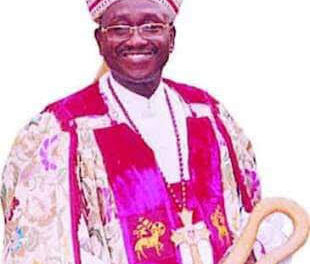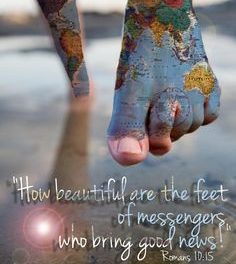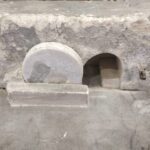In the same way I will not cause pain without allowing something new to be born,” says the Lord. “If I cause you the pain, I will not stop you from giving birth to your new nation,” says your God (Is 66:9).
God is saying to someone, there is beauty in your pain. We all have different experiences of pains. As Easter people, in our pains, all we have is hope, the hope of the beauty to come. May be all that you see around are persistent injustice, loneliness, hunger, wars, poverty, racism, immorality, evil, divisions, or doomed situations, remember, each day in our world, beauty is born anew. Pain is not beautiful but there is beauty in pain. Our pains echoes Christ’s pains, his broken body, broken promises and a brokenness of a fallen world, and an unjust life interruption. In pain, Mary and other women that watched Jesus on the cross remained faithful and hopeful. As Easter people, we called to trade our pain for purified beauty to have hope.
The hope and power of Christ’s resurrection beyond past events still permeates this world and according to Pope Francis, ‘and all who evangelise are instruments of that power.’ The sickness, the death of a loved one, or any other painful experiences must not have the last word over us. The dissonance with Christian theology based on the tension (the pull between death and resurrection) between the beauty of the Cross and the violence of the crucifixion points to missional form of Christianity. The beauty of Christianity is in the pain, the cruciform, with Jesus Christ upon the cross, arms outstretched in offered embrace, forgiving the world its sins. This is the Source of beauty in pain that saves the world, model of lifestyle for Easter people, beacons of resurrection light.
For the Easter people, people that lives in the light of God’s Word, beauty in pain beyond all niceties is about a purified beauty. Beauty in pain with power to save the family, the church and the world is the purified love of God. This type of purified God’s love that inspires beauty in pain ‘germinates, flowers, and comes to fruition only in a crucified heart.’ God’s love that nurtures beauty in pain, both with its human and supernatural character is based on the heart united with Jesus Christ on the Cross. Beauty in pain is about a heart that can pass through the narrow gate of the Cross and live in the light of Resurrection.
God is always faithful. God is able to to create a beautiful outcome even when there is pain. This is the grand testimony about Easter and for Easter people. Faithful Christians, beacons of resurrection light are Easter people, hence there is always beauty in our pains, there is always hope for us in the hopelessness of this world. The struggle with many people today is, why does life have to hurt at all? Why can’t I skip this part, the pain, and go straight to the reward, peace, and enjoyment? I am not too sure I have an answer. Easter people lives by and rest upon God’s promises. In the reading from Isaiah 66, the promise that like a woman in labour, something worth the pain is being born invites us to rest and believe in God’s promise.
Beauty in pain suggests a mantra for artists who are called to open their hearts completely to Jesus Christ. Openness of heart to Jesus empowers us to live in the fullness of both crucifixion and resurrection hence, Christ’s living words may flow through us. The problem in this age of comfort and materialism is that many artists and Gospel preachers like the rich young man in the Gospel draws back in revulsion from this invitation thereby ‘fail to understand that within the mystery of suffering with Christ is hidden a great joy—and inexhaustible riches.’ In essence, the basic problem against the experience of beauty in our pains today in the family, church and nations is that God detests those who pretend to worship Him but still choose to live by their own ways, terms and values. God will judge hypocrites who burns incense, as if he or she blessed an idol thereby chosen their own ways, just as their soul delights in their abominations and pride. There is no experience of beauty in the pains of the hypocrites because of their delusions and fear of God’s laws hence, when God calls they did not answer and when God speaks they did not hear or listen; but they continue to do evil before God and choose that in which God delights not (Is 66:3-4). Easter calls for our renewal of loyalty to God and His Word.
Easter people are like Abraham. In our life challenges and experiences, we must make a choice whether to follow God’s command and sacrifice or disobey God’s command. Easter people always remain faithful trusting in God’s divine plan and ready to obey God. Obedience demands faithfulness. When we meditate on the pain of the Cross from Jesus’ perspective; the emotional pain of His betrayal, the physical pain of His terrible death, and the spiritual pain of being made to be sin, Jesus’ obedience and love to the Father calls us to remain faithful as Easter people (2Cor 5:21). The beauty in Jesus’ pain is His transition from Good Friday to His glorification and resurrection on Easter Sunday with the hope of His Second Coming.
The beauty in Jesus’ pain reminds us about the Roman cross, ‘an instrument of physical torture and psychological terror, now becomes an object of beauty representing faith, hope, and love.’ Beauty in pain as a claim of Christian faith and lifestyle of Easter people is what Jesus accomplished in His death, a miracle that transformed ‘the Roman instrument of execution into a thing of beauty, there is hope that in Christ all things can be made beautiful.’ Jesus forever remains the hope, joy, and peace of the world now and in eternal life. Receive Jesus today as your Lord and Saviour and your Source of beauty in your pain.











Recent Comments